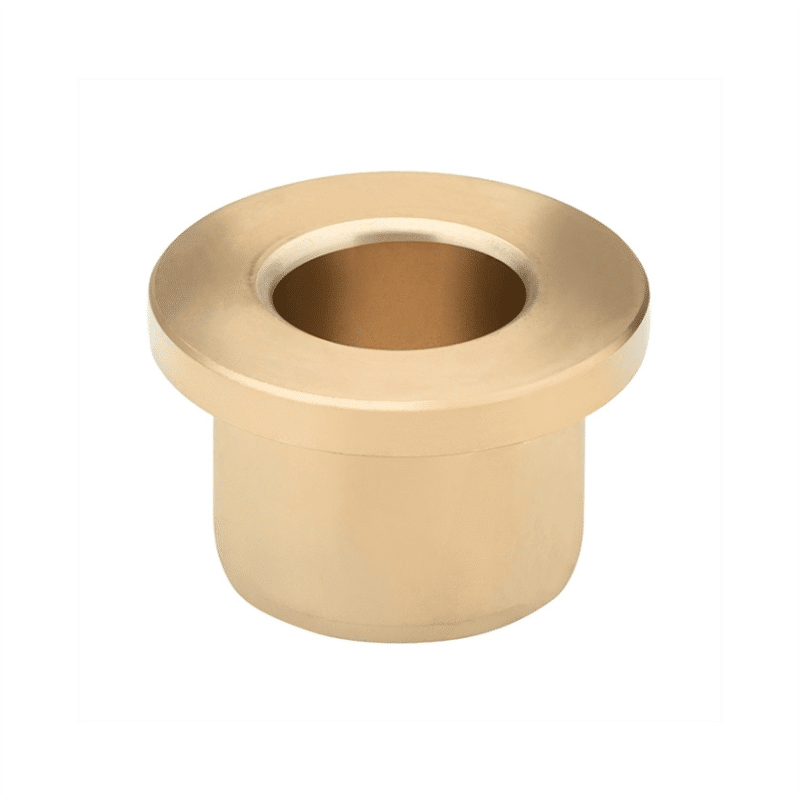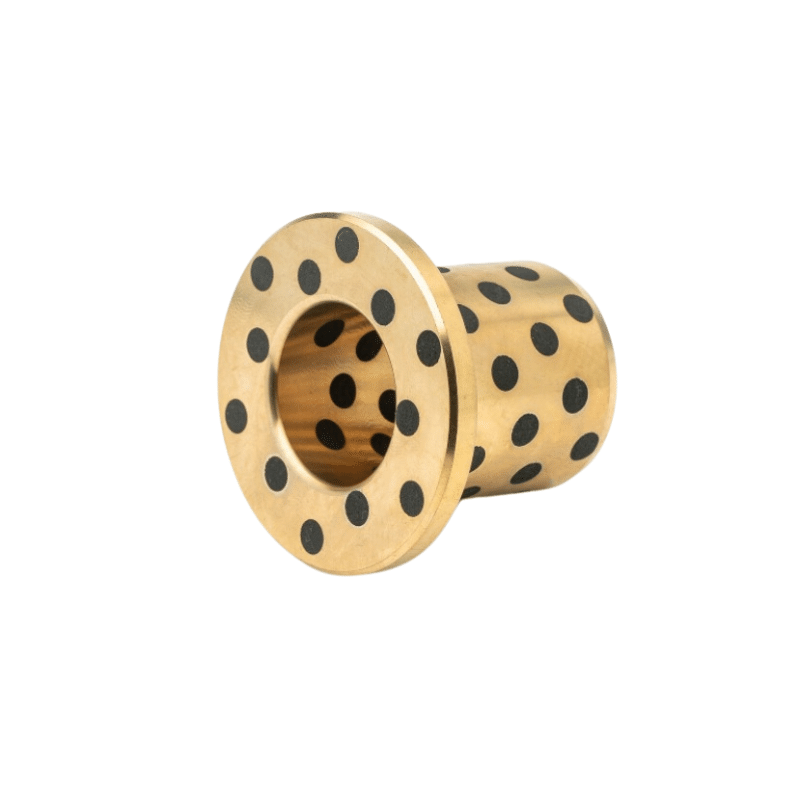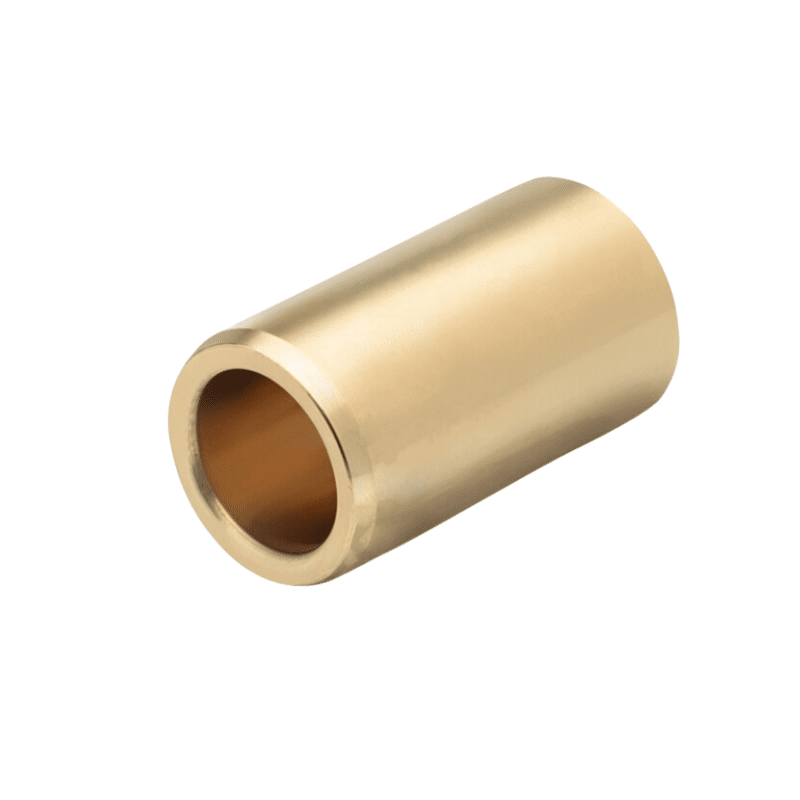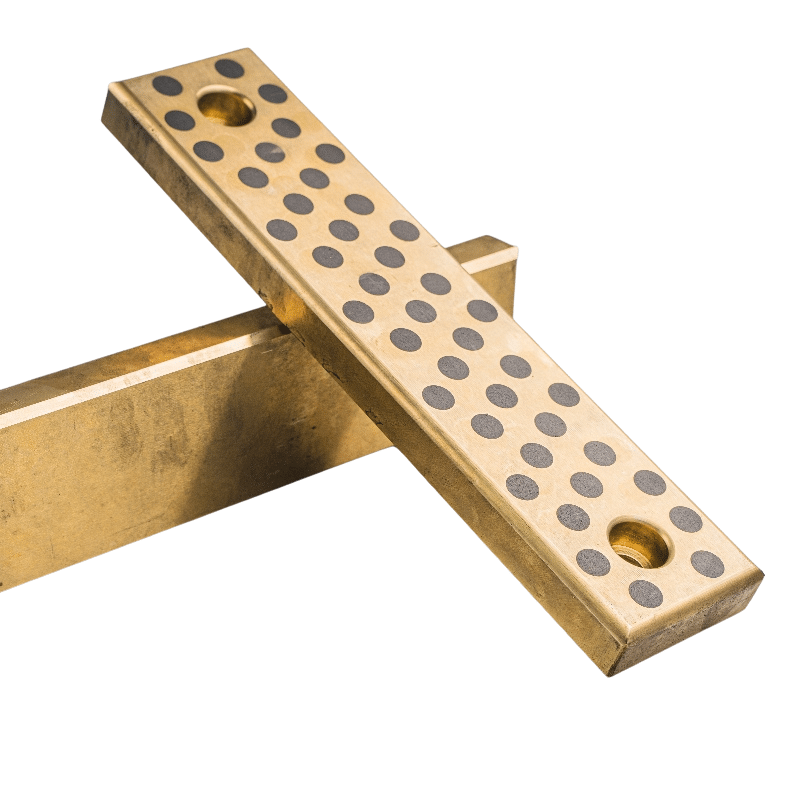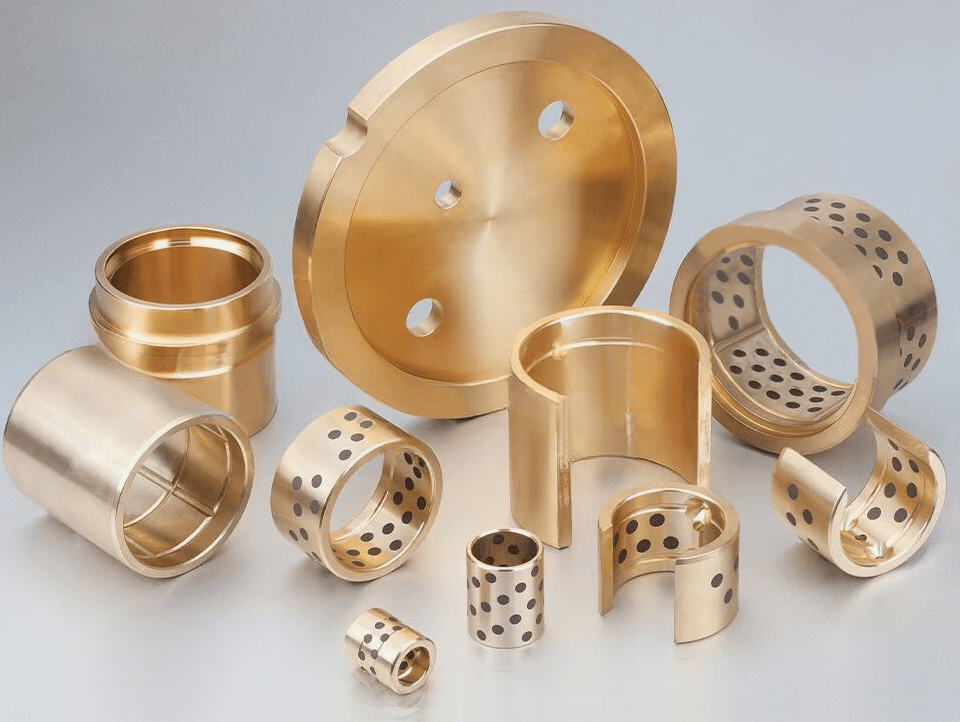
Bronze Bearings: Manufacturing & Production
Bronze Bushing types
Our company has a robust manufacturing capability for bronze and high tensile brass products, including a variety of shapes and custom parts. Here’s a breakdown of the bronze bushing types and other products you offer, along with some additional insights to help you communicate your offerings effectively:
Bronze Bushing Types and Shapes
Bronze bushings are widely used in industries for their excellent wear resistance, low friction, and high load-bearing capacity. Common types and shapes include:
- Sleeve Bushings
- Cylindrical shape, used for radial load applications.
- Available in various inner and outer diameters and lengths.
- Flanged Bushings
- Feature a flange at one end to provide axial support and prevent lateral movement.
- Ideal for applications requiring both radial and thrust load support.
- Thrust Washers
- Flat, disc-shaped bushings used to handle axial loads.
- Often used in rotating assemblies to reduce friction and wear.
- Spherical Bushings
- Designed to accommodate misalignment in applications.
- Commonly used in linkages and pivoting mechanisms.
- Custom Bushings
- Tailored to specific dimensions, shapes, or alloy compositions based on client requirements.
Other Bronze and High Tensile Brass Products
Your company also manufactures a wide range of other components, including:
- Plates and Sheets
- Available in various thicknesses and sizes for machining or structural applications.
- Rectangular Bars and Squares
- Used for machining custom parts or for structural applications.
- Rings and Flanges
- Used in sealing, mounting, or as wear components in machinery.
- Custom Parts
- Precision-machined components tailored to specific industrial needs.
Alloys You May Offer
Bronze and high tensile brass alloys are chosen based on their mechanical properties and application requirements. Common alloys include:
- Bronze Alloys
- Tin Bronze (e.g., C93200, C95400): High strength, excellent wear resistance, and good corrosion resistance.
- Aluminum Bronze (e.g., C95400, C95500): High tensile strength, excellent corrosion resistance, and good fatigue resistance.
- Phosphor Bronze (e.g., C51000, C52100): High fatigue resistance and excellent spring properties.
- High Tensile Brass Alloys
- Manganese Bronze (e.g., C86300): High strength and excellent wear resistance.
- Leaded Brass (e.g., C36000): Excellent machinability and good corrosion resistance.
Key Advantages of Your Manufacturing Capabilities
- Wide Range of Sizes and Shapes: Ability to produce standard and custom dimensions.
- Large Production Capacity: Ensures timely delivery, even for bulk orders.
- Customization: Ability to tailor alloys, shapes, and sizes to meet specific client needs.
- Quality Assurance: Compliance with international standards (ASTM, BS, EN, DIN, JIS, AS, ISO).
Industries Served
Your products are likely used in industries such as:
- Automotive
- Aerospace
- Marine
- Heavy machinery
- Oil and gas
- Construction
- Electrical and electronics
If you’d like help with marketing materials, technical documentation, or specific product details, feel free to ask!
Understanding Custom Bronze Bearings: A Guide to Copper Alloy Grades and Codes
When choosing a bearing material for machinery or engineering applications, one of the most crucial decisions is the selection of the right copper alloy. Bronze bearings, in particular, are highly valued for their strength, durability, and resistance to wear. However, with so many different alloy grades and codes available, it can be challenging to understand what each one means and how it affects the performance of your bearing.
In this blog post, we’ll break down a copper alloy reference table, explaining the materials used in custom bronze bearings and helping you decode the terminology behind each grade and code.
Copper Alloy Grades and Their Codes
Here is a reference table outlining the most common copper alloy grades and their respective codes:
| Material Classification | Alloy Grade | Code |
|---|---|---|
| Multi-element Brass | CuZn25Al5Mn4Fe3-C | CC762S |
| Tin Bronze | CuSn10-C | CC480K |
| Tin Bronze | CuSn12-C | CC483K |
| Tin Bronze | CuSn12Ni2-C | CC484K |
| Tin-Lead Bronze | CuSn5Zn5Pb5-C | CC491K |
| Tin-Lead Bronze | CuSn7Zn4Pb7-C | CC493K |
| Leaded Bronze (to be confirmed) | CuAl10Fe2-C | CC331G |
| Leaded Bronze (to be confirmed) | CuAl10Ni3Fe2-C | CC332G |
| Leaded Bronze (to be confirmed) | CuAl10Fe5Ni5-C | CC333G |
Key Analysis and Explanation
- Classification Naming Issues
The term “Leaded Bronze” is often used incorrectly in some grades (e.g., CuAl10Fe2-C), which are actually aluminum bronzes, not leaded bronzes. To clarify:- Tin Bronze: The primary alloying element is tin (e.g., CuSn10-C).
- Aluminum Bronze: The primary alloying element is aluminum (e.g., CuAl10Fe2-C).
- Leaded Bronze: This type should contain a significant amount of lead (Pb), as seen in grades like CuSn5Zn5Pb5-C.
Recommendation: The term “Leaded Bronze” should be revised to “Aluminum Bronze” for clarity and accuracy.
- Understanding the Alloy Compositions
- Multi-element Brass (CuZn25Al5Mn4Fe3-C): This alloy contains 25% zinc, 5% aluminum, 4% manganese, and 3% iron. It is known for its high strength and wear resistance, making it ideal for applications that require durable performance under load.
- Tin Bronze (CuSn10-C): Containing 10% tin, this alloy is a popular choice for bearings and gears due to its excellent wear resistance and ability to handle high-pressure applications.
- Tin-Lead Bronze (CuSn5Zn5Pb5-C): Composed of 5% tin, 5% zinc, and 5% lead, this alloy combines the lubricating properties of lead with the corrosion resistance of tin and zinc, making it ideal for low-pressure sliding bearings.
- Understanding Alloy Codes
- The CC prefix likely represents the copper alloy category.
- The numbers in the middle (e.g., 762, 480) may refer to composition or standard numbers.
- The suffix letters provide additional information about the alloy’s characteristics:
- K generally denotes casting (e.g., CC480K).
- G may indicate special treatments (e.g., CC331G for aluminum bronze).
- S may represent a special purpose (e.g., CC762S).
Applications for Custom Bronze Bearings
Now that we’ve decoded the alloy grades, let’s look at some common applications for custom bronze bearings:
- Tin Bronze (CC480K): This material is frequently used for marine components such as ship fittings and valves, where corrosion resistance and durability are critical.
- Aluminum Bronze (CC331G, formerly Leaded Bronze): Commonly used in high-stress applications like ship propellers or components that require high strength and resistance to seawater corrosion.
- Tin-Lead Bronze (CC493K): With its excellent self-lubricating properties, this alloy is perfect for sliding bearings, low-pressure seals, and bushings.
Conclusion
When choosing a bronze bearing material, understanding the composition and properties of different copper alloys is essential to ensuring the right fit for your application. By decoding the alloy grades and codes, you can better navigate the range of materials available, selecting the optimal option for your needs.
Whether you’re manufacturing machinery, ship parts, or high-performance components, custom bronze bearings offer unmatched durability, strength, and wear resistance. By working with a supplier that understands the nuances of alloy composition and bearing design, you can ensure a long-lasting, efficient solution.
If you have any questions or need assistance with choosing the right custom bronze bearing material for your project, feel free to reach out to us!

